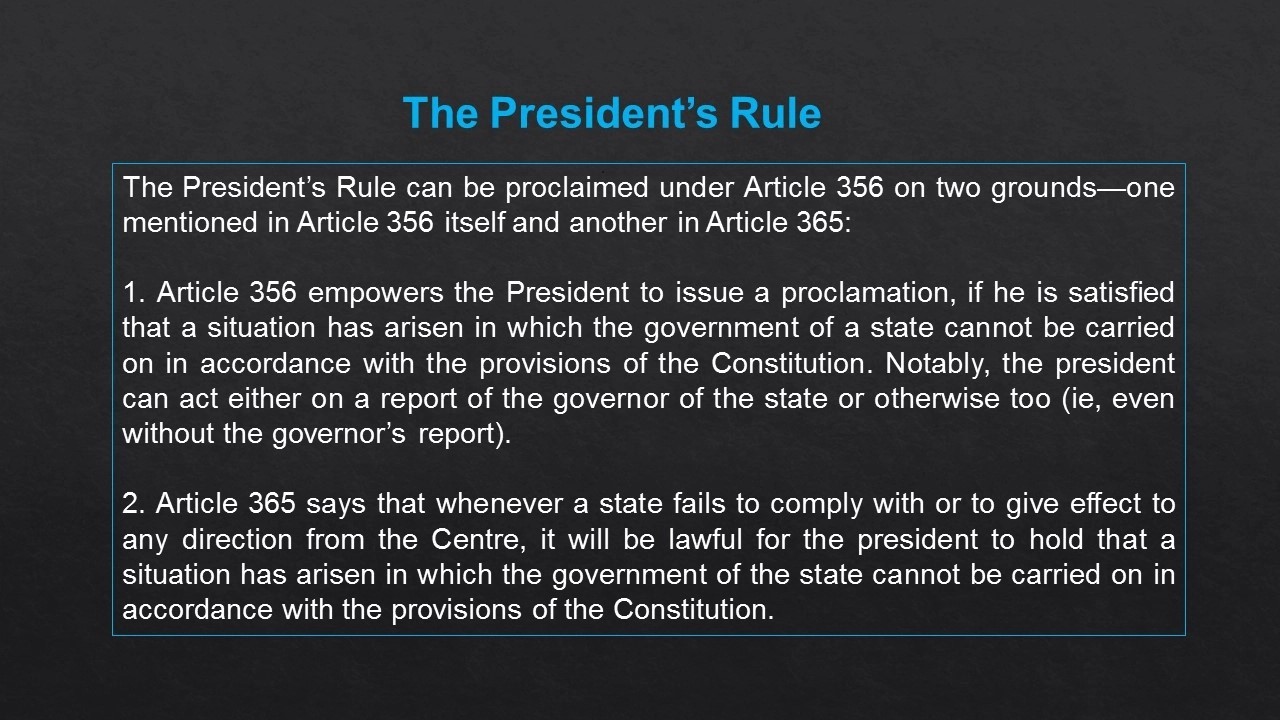Understanding President’s Rule and Its Legal Nuances
Understanding President’s Rule and Its Legal Nuances
Why in the News?
In the latest world news today, a delegation of 10 Manipur MLAs urged the Governor to form a government after President’s Rule was imposed in February 2025 due to political instability. This situation raises questions about the use, misuse, and revocation of Article 356.
Historical Usage and Judicial Oversight:
- Dr. Ambedkar hoped Article 356 would remain a dead letter, but it has been misused, especially for political reasons.
- Governors have differed in approach regarding Assembly dissolution—sometimes acting on advice of CM, even with doubtful majority, and sometimes refusing.
- In the S. R. Bommai (1994) case, the Supreme Court held misuse of Article 356 is subject to judicial review and can’t be used for ordinary law and order issues.
- The Court also ruled Assemblies should not be dissolved before parliamentary approval.
Recent Context and Way Forward
- Manipur is under President’s Rule since Feb 2025 amid security breakdown.
- The current Assembly’s term ends in March 2027; hence, revoking President’s Rule to install a majority-backed government is legally and politically advisable.
- Courts have acted against wrongful impositions in Bihar (2005), Uttarakhand, and Arunachal Pradesh (2016).
Constitutional Provisions and Procedure: |
| ● Under Article 356, the President can impose President’s Rule if a State government cannot function according to the Constitution. |
| ● It may be invoked based on a Governor’s report or failure under Article 365 to follow Union directions. |
| ● The proclamation must be ratified by both Houses of Parliament within two months, and can be extended in six-month intervals for a maximum of three years. |
| ● The Assembly is usually kept in suspended animation, not dissolved immediately. |





